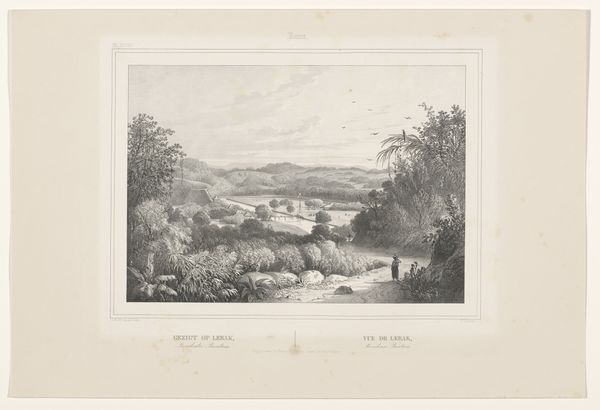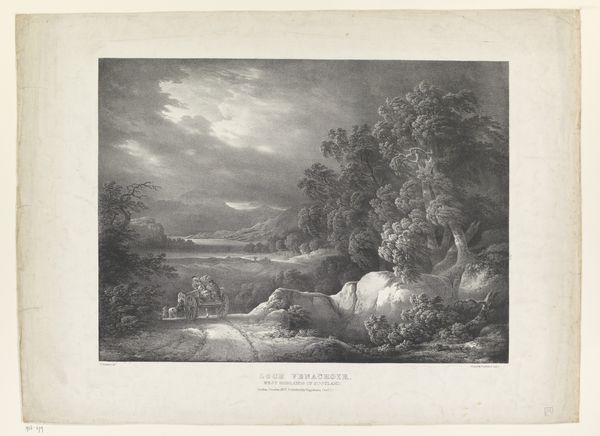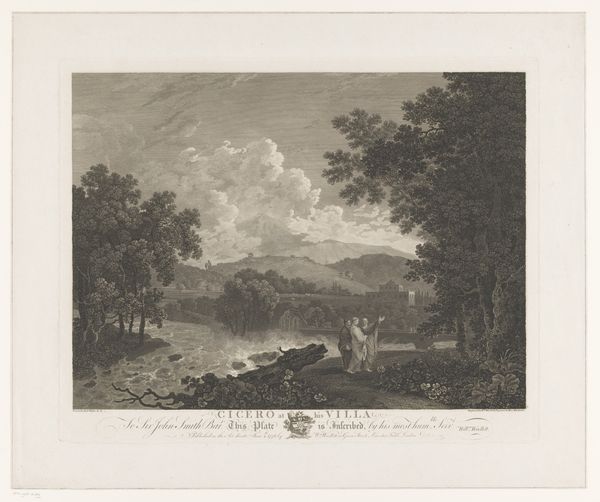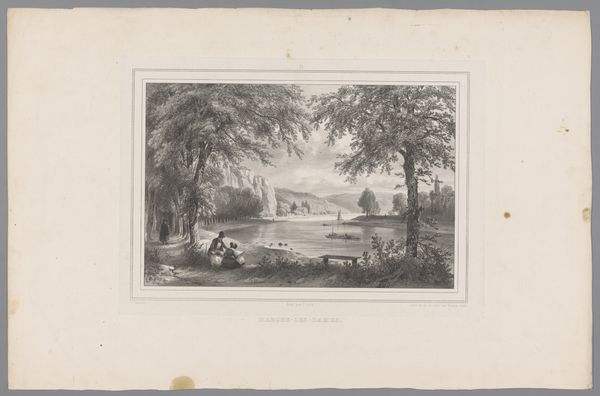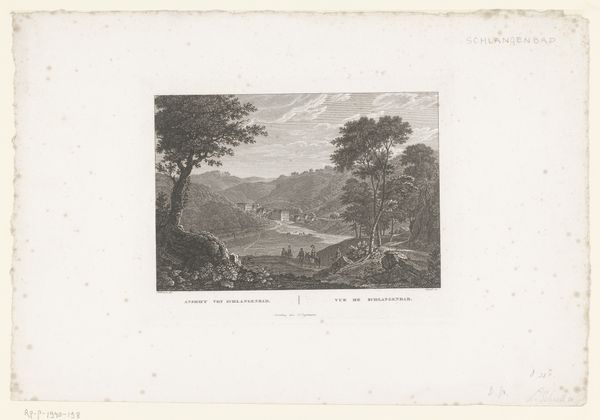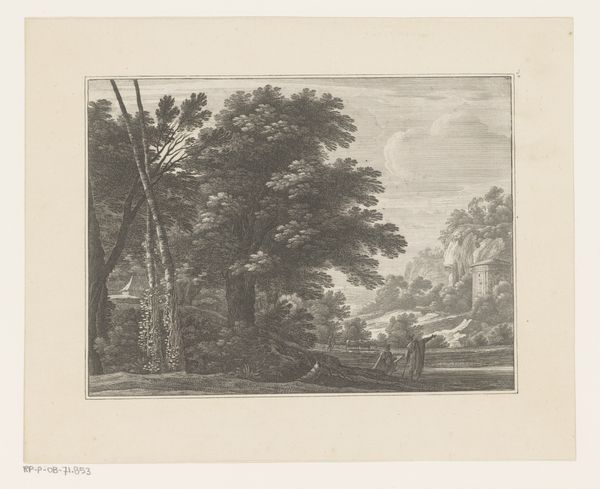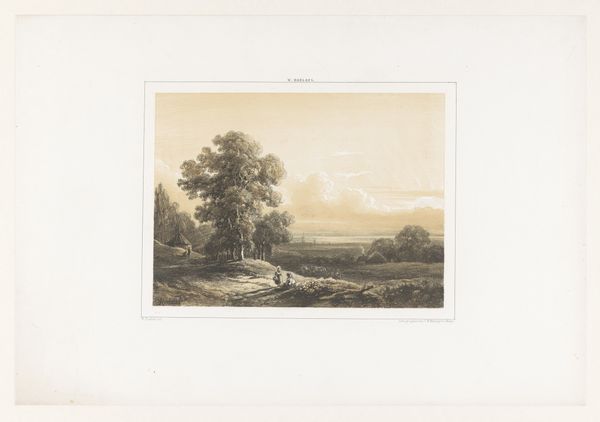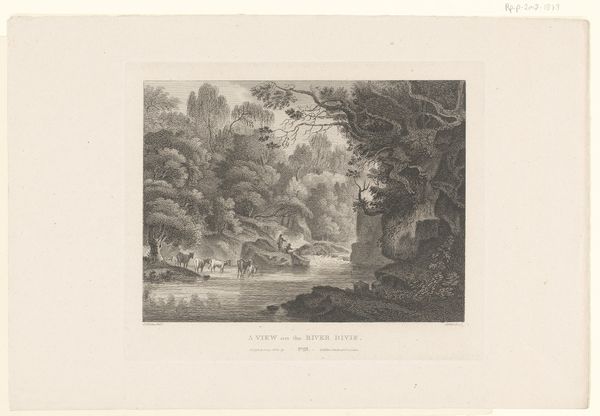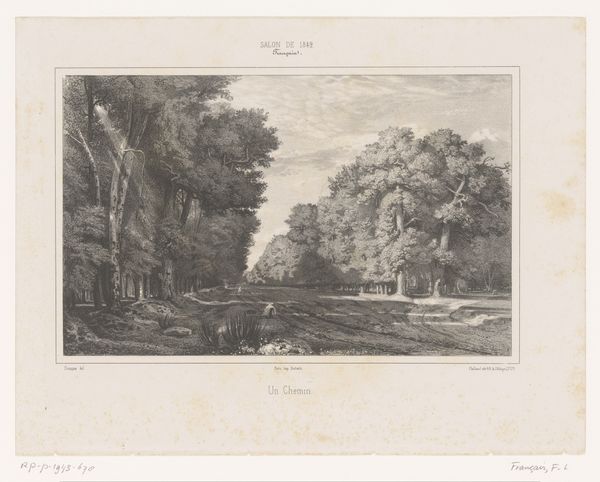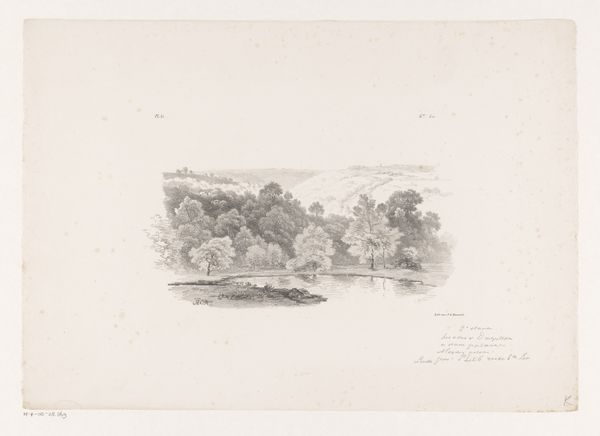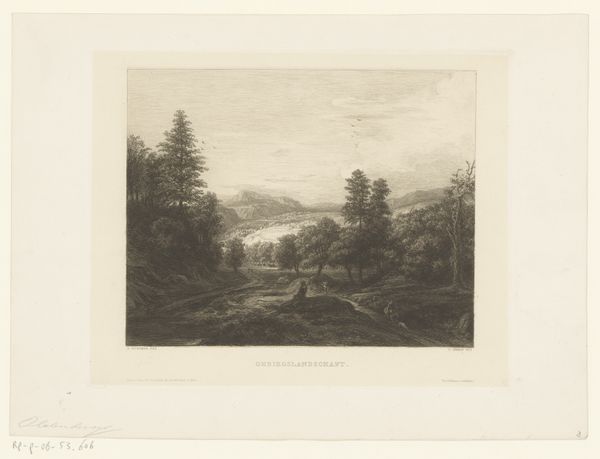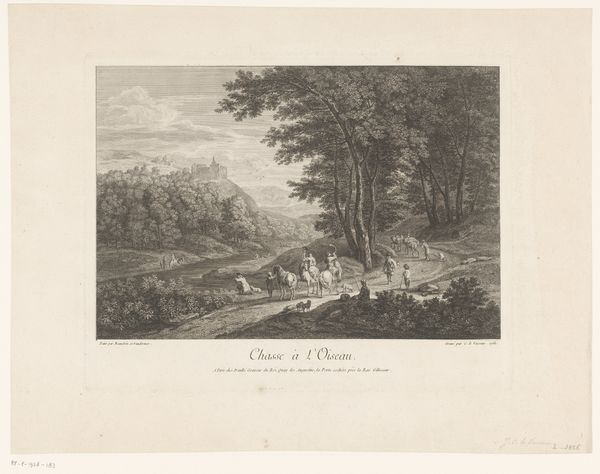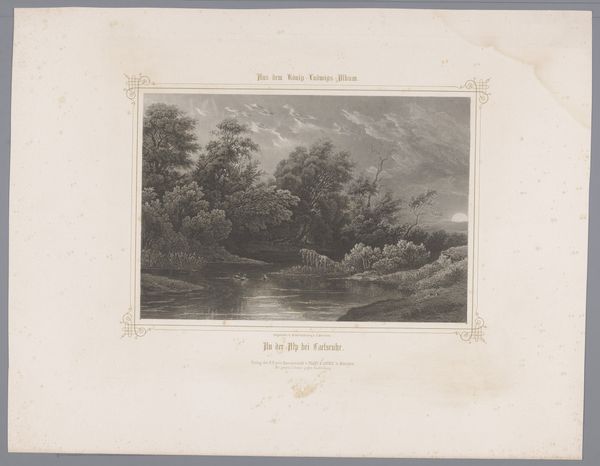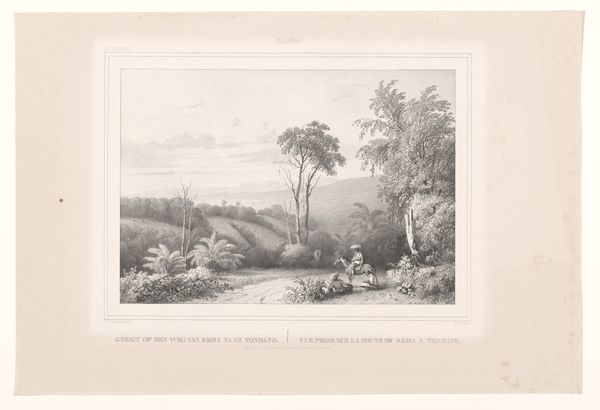
drawing, print
#
drawing
# print
#
landscape
#
romanticism
#
realism
Dimensions: height 313 mm, width 435 mm
Copyright: Rijks Museum: Open Domain
Editor: So, this is "Vrouw in Gelders landschap" by N.M. Schild, made sometime between 1837 and 1840. It’s a drawing or print. The landscape is peaceful, but there's a certain solitude, seeing the woman alone on the path. What do you see in this piece, especially regarding its context? Curator: What strikes me immediately is how this idyllic landscape belies the social realities of 19th-century rural life. While on the surface it speaks to Romanticism, idealising nature, we need to critically examine whose story is being told, and from what perspective. Who is this woman, alone in the landscape? What is her relationship to the land? Editor: I hadn't thought about that. She seems almost like a symbol *of* the landscape, not necessarily *in* it with agency. Curator: Precisely. Consider how class and gender intersect here. Landscapes like this often erase the labour and struggles of those who worked the land, particularly women. Are we seeing an accurate portrayal, or a romanticized version meant to appeal to a particular viewership – one likely far removed from the actual hardships of rural existence? What about the economic forces at play during this period, driving people off the land and into burgeoning urban centres? Editor: So, by presenting this idealized version, it might be obscuring the truth of the time. Are the realism elements more about capturing an aesthetic, rather than representing reality? Curator: Exactly. Realism here serves to naturalize an ideological perspective. It’s crucial to ask, whose reality is being represented and to what end? Can we look at art like this and also look at the societal factors impacting women and marginalized populations in the region during this time? Editor: This definitely gives me a lot to think about when looking at landscape art now. I hadn’t considered it beyond just the visual. Curator: That's the power of art, isn't it? To provoke questions and encourage us to critically examine the world around us and how we see history.
Comments
No comments
Be the first to comment and join the conversation on the ultimate creative platform.
